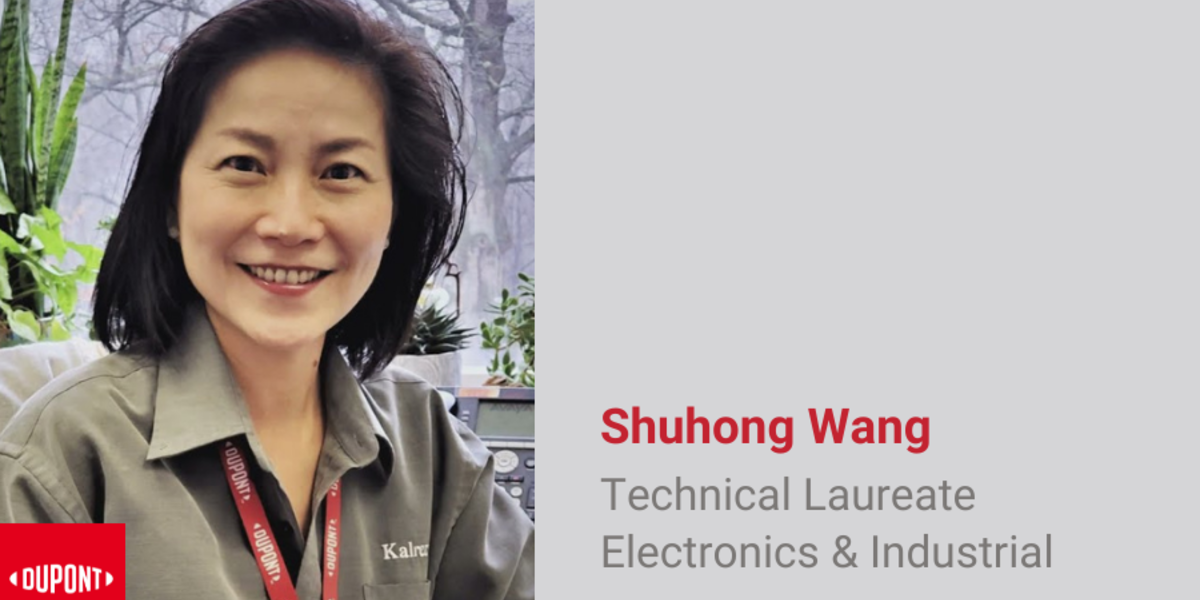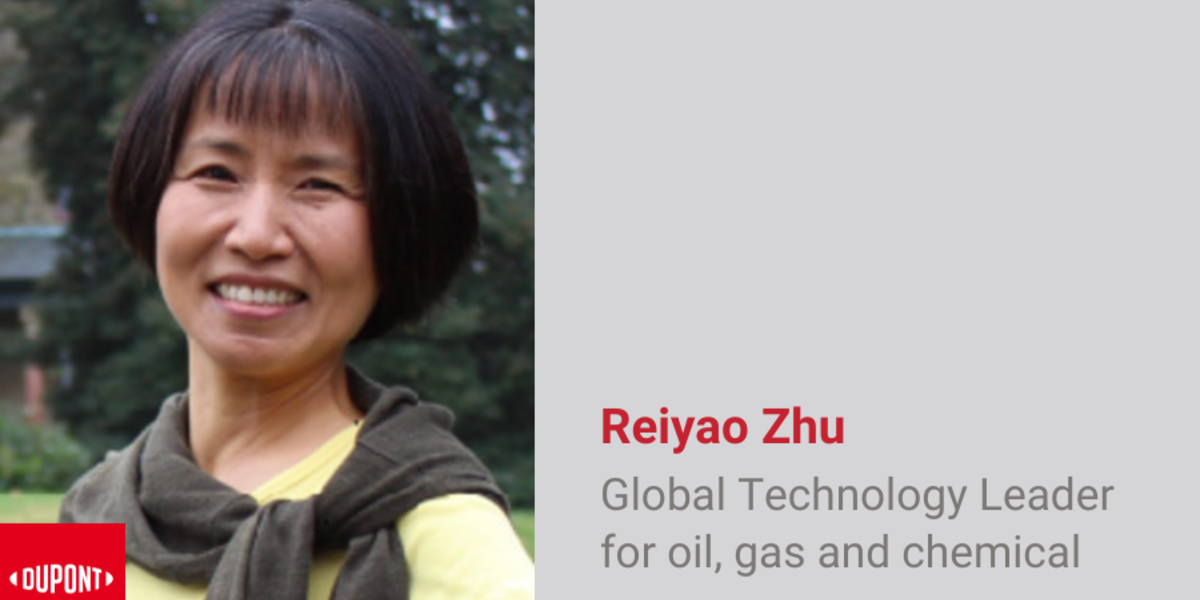-

Roundtable Recap: Key Challenges and Opportunities for Gender Diversity in the Post-pandemic Era
On November 24, Half the Sky gathered 9 leading corporates which included: Microsoft, Accenture, Equinix, Dupont, AkzoNobel, Avanade, Yara International, Johnson Controls, and Ciscofor our inaugural roundtable series: “DE&I Challenges & Opportunities for Corporates in a Post-Pandemic World.” This event was moderated by the HTS Founder & CEO Sabrina Hoand HTS advisor Duncan Hewett.The small group size and selective attendance maximized the opportunity for candid sharing, networking and learning value. We certainly got a lot of insightful pointers to share with you read on for a recap of the days event:It was noted throughout the roundtable that Diversity, equity, and inclusion (DEI) have the power to transform business by creating a truly inclusive workplace culture — which, in turn, drives employee satisfaction and retention. In fact, significant polls show that today’s jobseekers prioritize inclusion and want to feel like they belong over financial incentives.Although many companies believe in a DEI strategy many find they run into certain challenges that can complicate the process or keep it at a standstill.Here are the five key challenges identified during the roundtable: 1. Availability of diverse talent Ms. Irnizah Khusaini, of Johnson Controls, shared that one of the key reasons for such a scarce availability of diverse talent is because the industry is mostly pipelined by men. In the 2022 statistics, men are still dominant in the tech industry posing 73.30% over women that has only 26.70%. In addition, women who manage to work into a male-dominated tech companies are often met with lower pay for the same grade of work.Ms Khusaini also added that hiring managers should be encouraged to build more diverse teams and have more women in senior positions. Encouraging managers to view talent through a diverse lens, including the perspective of female talent, can bring valuable dynamics to teams in male-dominated industries, ultimately adding value to the business.2. Lack of initiatives for system changes For Ms. Lynn Dang of Microsoft, she mentioned that it is imperative that a system change should be implemented within the organization to create better roles and opportunities for female talents. “So, for industries like technology, we need systemic changes to enable a more inclusive workplace environment and it really starts from an early age so that young girls are encouraged to pursue careers in STEM” Ms. Dang said. Ms. Lynn also noted that one of the key challenges in implementing DE&I in today's corporate environment is the difficulty in maintaining the flow of female talents joining the tech industry. 3. Cultural challenges Ayaka Yamada, Senior Manager of Culture & Change at Yara mentioned that Japan is also facing cultural challenges when it comes to its female workforce. She shared that, “In Japan, it is unfortunate that women are not given the same level of appreciation for their work in the workplace.” Ms. Yamada also explained that in some cultures in Japan, women tend to stop working after they get married. “They think that they need to contribute a lot to the family and they need to dedicate their lives to housework and caring for their children and husband.” It was noted that Japan is ranked 120 out of 156 countries in the Global Gender Gap Index (GGI) in 2021 the worst ranking for an industrialized nation. 4. Nature of industry For Ms. Tiffany Chan of Accenture, one of the antagonists in improving gender diversity in the workplace is the nature of the of the industry. “I think all leaders are really supportive of having diversity and inclusion in our recruitment but I think the challenge is that the nature of our business makes it really hard to do so.” Ms. Tiffany explained. Further, for industries that focus on manufacturing and industrial work like Dupont, Ms. Angielina Tay noted that the real struggle for their industry is to find female professionals that fit in an operational manufacturing environment. “In our industry, it’s a real challenge to find field scientists, there are only a few female talents who are willing to be part of that kind of environment.” Ms. Angielina shared. 5. Hiring to fill not hiring to fitHiring quickly pose risks and possible detrimental outcome-- it may cause high turnover, lost time and wasted training resources. But most importantly, you might miss on diverse talent that’s critical to a company’s success.For Ms. Jalene Liu of Equinix, she shared the data that shows that female candidates should be nudged 7-9 times before they decide to join a company. Further, she said that hiring managers shouldn’t be in a rush to hire talent. “If the hiring manager is always in a rush, there's very little chance of onboarding diverse talents. So, they have to slow down and be focused on driving diversity, and you know, considering the diversity of candidates before deciding to hire.” Finding the right balance between speed and effectiveness should always be in the process of hiring managers. A lot of challenges on diversity and inclusion has been discussed but there are also key opportunities that were tackled in the roundtable. Here are 5 key opportunities that were discussed during the roundtable: 1. Remote work setup For Ms. Carole Hung of Akzo Nobel, she claimed that remote setups are especially conducive to working moms who are trying to get back in the workforce. “Remote work setups really help, it’s an encouragement to working moms to come back to society.” Ms. Hung said. Aside from working moms, Ms. Tiffany of Accenture also shared her learning experience on people with disabilities. She said that the option of being able to work from home opens a lot more opportunities for persons with disabilities. “They can have the flexibility to work from home now and I think this is an area that we can look into with more effort,” Tiffany said. According to Forbes, remote opportunities will continue to increase through 2023 and it’s been projected that more companies would move to remote setup.2. Culture of empathy in the workplaceForging a culture of empathy takes many shapes and forms in the workplace, even in a remote setup, this type of culture is supported by Ms. Jalene Liu, of Equinix. She said that having an environment with empathy makes a difference when it comes to mutual respect among employers, managers, and employees. She said “Being a good company also has something to do with the company culture, it should build a healthy environment for the employee, there should be.” 3. Right to disconnect Studies have shown that burnout and stress are the effects of an ‘always on’ culture on employees that are checking messages after work. Expert says that knowing how to disconnect after work is one way to resolve it.For Ms. Lynn of Microsoft, she shared her experience of learning the need to delay when it comes to reaching out to employees via email.“I realized I need to delay sending emails after working hours, it’s a way to respect and have empathy and not to disrupt other people's time.” Ms. Lynn explained. 4. Support for Diversity and Inclusion For Mr. Duncan Hewitt HTS advisor mentioned that men who supports women in the workplace are also the kind of allies the industry need to build diversity. On the same discussion, Denise Naidoo of Avanade Asia, added that leaders have the responsibility to ensure that the company represents the communities they live in. “It's about just rebalancing, everyone that comes there [should] feel like they can be their authentic selves and have a sense of belonging,” Denise said. In 2022, there has been a lot of progress when it comes to inclusivity at work. Progressive industries are now creating diversity campaigns to attract and welcome diverse talents around Asia and even the whole world.5. Better recruitment practices For Cisco’s, Mr. Gary Chua, in order to achieve a diversified pool of talent, one effective strategy is to encourage the participation of female talent from early career stages."We've just deployed techniques to start doing internships with female talent and we also started looking at cross-company mentoring of junior talent,” Chua said.In an article from the Guardian, it stated that gender-neutral job descriptions would reduce impostor syndrome among women looking to enter a male-dominated internship. When screening potential interns, companies should have diverse hiring panels and gender-neutral interview questions.The roundtable ended with a fruitful discourse of the challenges and opportunities each of their respective industries face. This discussion will surely reshape the culture of the corporate world to a better, more diverse environment. Join us on our mission to level the playing field for women at work and prepare for the future of work and become a company that cares.
-
.png)
DuPont: No Time to Stand Still Stepping forward on Advancing Diversity, Equity and Inclusion
I think we can all agree; the racial and social injustice and inequities that we witnessed in 2020 were not only disturbing but also sobering in how they made us realize there is much work that must be done to achieve a more just and equitable society. It became abundantly clear at DuPont that we couldn’t and likewise wouldn’t stand still in the face of widespread atrocities, particularly against people of color, in the U.S. Etched in our not-too-distant memories, COVID-19, the climate crisis, racial equity and justice and economic opportunity for all — these highlight the need to address the systemic fault lines in society and provide DuPont with an opportunity to audit what actions we have been taking over the past several decades and what new and ambitious commitments should we take to further drive DE&I globally. At DuPont, we’re accustomed to leaning into our Core Values, specifically our Respect for People, and think of them as anchors, foundational to our growth as a company. But the severe realities of 2020 have required an even stronger commitment to breathe air into these pledges as a way of life and means to end discrimination, inequity and exclusion. We know we can’t change yesterday but we’re all in for making changes for a better now and a more equitable tomorrow. Among our top commitments to drive DE&I in the U.S.: Inside DuPont, we’re making significant financial contributions to support career development of black and minority employees by advancing professional development, mentoring, recruitment and retention. We have dedicated staff, including DE&I resources, that develop our programs, support and grow Employee Resource Groups, and manage the company’s investments in a sustained effort to drive necessary change. Outside DuPont, we’re focused more than ever on Community Impact, investing in organizations and targeted partnerships to address racism and equity in broader communities through STEM learning, mentoring, scholarships and internships. Despite knowing there’s more work to be done, I’m honored to say we’ve reinvigorated our efforts. All told, it’s been both humbling and gratifying to be recognized for our efforts thus far. Recently, DuPont was recognized as “Best of the Best” by the Black EOE Journal. We also have achieved perfect 100 percent scores from the Human Rights Campaign Corporate Equality Index and Bloomberg’s Gender Equality Index and Disability Equality Index. As we turn the page on 2020, 2021 is a clarion call to all, including DuPont, to take a hard look at how we got here and where we need to go next. With the help of my colleagues and our communities, we have the opportunity and imperative to help drive change that brings about a more fair, inclusive and equitable society. This article was written by Kim Markiewicz, Chief Diversity, Equity & Inclusion Officer, DuPont.
-
.png)
DuPont: Shuhong Wang’s Story
Shuhong Wang is Technical Laureate at Dupont. For over 200 years, DuPont has been synonymous with life-changing discoveries and scientific know-how, reinventing themselves along the way.When did your interest in science or engineering begin?My interest in science started in Middle school after I took chemistry and physics. I found the subjects to be very interesting.What was it like to be a woman studying in your field?I grew up in China. Although I was taught that women can do everything there were mostly men in science and engineering. I remember that when I picked college applications and chose to be an engineer in polymer and materials, my classmates joked that I may grow beard in the future.Share with us some of your career highlights.I am a Technical Laureate at Dupont and have developed a strong reputation internally and externally, through sustained and impactful contributions, broadly recognized collaborative and pragmatic approach to product development, and customer focus.Over my 25 years in DuPont, I have led the development of many DuPont Kalrez® products, that widely adopted, well recognized and proven to be the premium sealing materials for most aggressive and demanding environment. I received DuPont Bolton/Carothers Innovative Science Award in 2011. In 2020, I got the DuPont Pedersen Metal Award which recognizes and promotes technical and scientific excellence.I have a Ph.D. in Polymer Science from University of Cincinnati and a B.S. from East China University of Science and Technology. I am an author of over 35 publications and several patents. My current goal is to inspire, recognize, and develop others and be a role model for younger generation innovators.To date, what project is your greatest innovation success? What is the story behind it?Kalrez® 9000 series compounds for premium semicon plasma application. Among them, Kalrez® 9100 won Editor’s Choice 2008 Best Product Award for “The Semiconductor International” and became the industry benchmark.Over the years I developed deep understanding of elastomeric science and technology and developed a map relating the material to key properties for semicon use such as thermal, plasma and chemical resistance as well as sealing functionality. Working with a broader Kalrez® Research & Development Team, Kalrez® 9000 series compounds were developed with unique and preparatory chemistry, material science and engineering.The biggest and unique challenge to develop these new products for semicon applications is to improve all the performance while reducing the introduction of potential contaminations. However, semicon industry doesn’t have standard methods to measure or predict those contaminants for sealing materials. I did a deep-dive into the semicon related processes and plasma science. I worked with various groups within the DuPont company and the external industry consortia such as IMEC, SEMATECH and universities, developed plasma testing capabilities to simulate industrial processes, such as plasma enhanced deposition, etching and ashing, as well as particle testing methods to predict the particle generation potential from sealing materials. Developed technical data to support the introduction of new products. Provide seminars and presentations to key customers and at conferences.Tell us about something that made you grow the most as a leader in your field.Curiosity, Passion, Tenacity, Collaboration…How are you and/or your company bringing innovation to the forefront?Perfluoroelastomer was invented by DuPont. It is the most thermal and chemical stable elastomer. Kalrez® perfluoroelastomer parts deliver sealing solutions for most challenge and demanding applications. We’re pushing the boundary for sealing materials, to develop seals that will stand at extremely high temperatures (> 300 oC), and with the most aggressive, and harsh chemicals. Seals are essential to keep the equipment operating properly and to contain the toxic and corrosive chemicals and gases. The seals also offer important protection to workers and the surrounding environment.Over the years I led the development of many DuPont™ Kalrez® perfluoroelastomers products are used as critical seals in the advanced manufacturing of semiconductor integrated circuits (IC) and other microelectronic devices. Other example is in oil and gas drilling applications where it is under extreme high pressure together with high temperature in down hole application, and in applications such as airplane transportation.What advice do you have for future female engineers?Lean forward. Don’t be afraid or be shy. Think big and follow you dreams. You can do it!
-
.png)
DuPont: Reiyao Zhu’s Story
Reiyao Zhu is Global technology leader for oil, gas and chemical vertical at DuPont. For over 200 years, DuPont has been synonymous with life-changing discoveries and scientific know-how, reinventing themselves along the way.When did your interest in science or engineering begin?I was interested in science and engineer in my elementary school. It was always fun to solve math problems.What was it like to be a woman studying in your field?There were very few women in the classroom. It was an exciting experience to be at the top of class. I never thought women should/would be anything less in achieving academic excellence.Share with us some of your career highlights.I own 48 patents (40 US patents and 8 European patents), a Ph.D. in engineering and is a technology leader in worker protection.To date, what project is your greatest innovation success? What is the story behind it?Developed a protective fabric for electrical worker’s arc protection. There are always ups/downs during product development and launch. Sticking with the goal is the key to have a successful product.Tell us about something that made you grow the most as a leader in your field.Really enjoying what I am doing. Develop new products and solve the customer problem excite me the most.How are you and/or your company bringing innovation to the forefront?Encouraging and fostering the innovation behaviors. Customer centric. Multiple generation technology planning.What advice do you have for future female engineers?Focus on what you enjoy doing. Have your own board of directors to give you feedback, and advice. Have realistic expectations and practical approaches.
-

Tips For Getting Hired During COVID-19
The global pandemic COVID-19 has changed everything, we are now all staying at home, working from home and social distancing. The crisis is having a major impact on the job market and for those looking for work it’s a tough time.Our CEO and Founder Sabrina Ho discussed with Chris Mead Head of Talent Acquisition APAC at DuPont on the tips for getting hired during Covid-19. It was a very insightful and engaging Webinar where we learnt how to best job search, prepare the best CV and create a rock star Linkedin profile.Here's Chris advice:Start by doing the basics – take time to prepare your CV.Be Adaptable during this time.Build your resilience – these difficult times will make us strongerDevelop a strong “Rock Star” LinkedIn profile – it’s essential to getting hired!During interviews – always be honest don’t feel ashamed if you have been made retrenched – being retrenched is very common.Hiring Managers are focused on hiring candidates based on general ability, attitude and potential for growth. Make sure on your CV and in an Interview that you promote your strengths in these areas.Become technically adaptRemote working is here to stay, job interviews will change – practice, practice your video interviews, take good care of your technology.Although tough times companies are still hiring stay positive.Take this time to figure out what your passionate about as you choose your next career stepI hope these tips are useful and please take a look at the video you’ll find some really great tips that Chris expanded upon. Thanks to all those who attended from Australia, Singapore, Hong Kong, India, Malaysia, Indonesia and Philippines your participation made it a great success.If you have more questions you can reach out to us or comment below.
Search by
Search by topic
